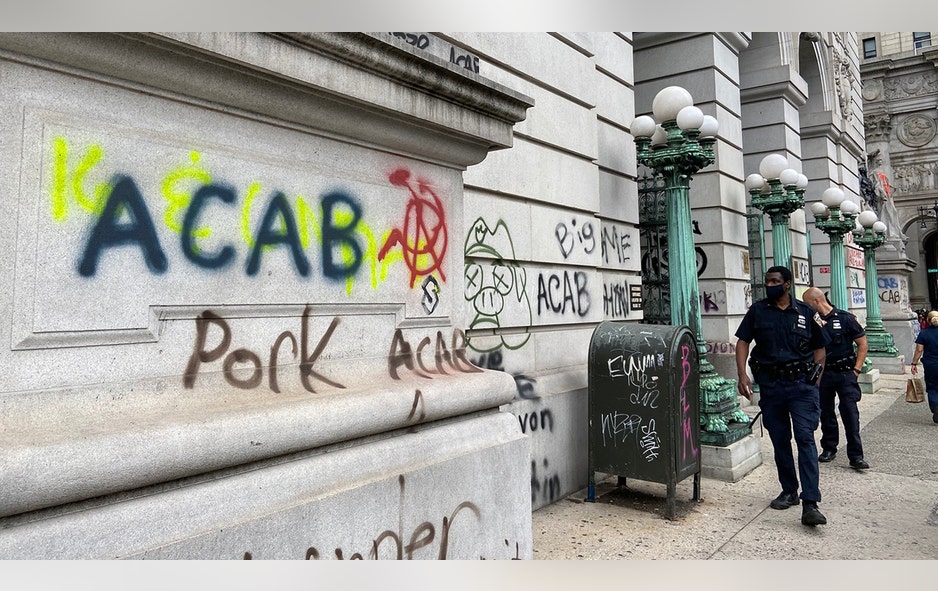British judge orders Christopher Steele to pay damages to Russian bankers named in dossier
A court in the United Kingdom ordered British ex-spy Christopher Steele to pay thousands in damages to two Russian bankers named in the former MI6 agent’s dossier as having “illicit” financial ties to Russian President Vladimir Putin.
Justice Warby of the Queen’s Bench Division of the British High Court of Justice presided over a weeklong March hearing in the defamation lawsuit brought by the owners of Russia’s Alfa Bank, Petr Aven, Mikhail Fridman, and German Khan, against Orbis Business Intelligence, Steele’s private intelligence firm through which he conducted research in 2016 for Fusion GPS through the Perkins Coie law firm on behalf of Hillary Clinton’s campaign and the Democratic National Committee.
Steele made a series of allegations related to the Russians and their connection to Putin in “Memorandum 112” of his dossier which was used in the FBI’s Russia investigation, and Sir Mark David John Warby ruled Wednesday that one of the assertions, that former Alfa executive and current Russian government official Oleg Govorun was used by Aven and Fridman to deliver “large amounts of illicit cash” to Putin when he was deputy mayor of St. Petersburg, was demonstrably false and worthy of fines of more than $22,000 that will be paid to Aven and Fridman.
“I have found that the ‘illicit cash’ allegation was inaccurate,” Justice Warby ruled, saying its disclosure to Fusion GPS and to government officials violated the U.K.’s Fourth Data Protection Principle, which states that personal data processed for law enforcement purposes must be accurate. “The personal data about the delivery of ‘illicit cash’ to Mr. Putin did amount to sensitive personal data about alleged criminality … My conclusion is that I should award each of the first and second claimants compensation in the sum of £18,000.”
The judge ruled that Steele’s claims about Govorun were demonstrably “untrue” because “there is documentary evidence that Mr. Putin ceased to be Deputy Mayor in June 1996, and that Mr. Govorun was first employed by Alfa Bank on 3 March 1997.” The judge said Steele “admitted in cross-examination that Govorun was not working for Alfa before 1997, and that his source had erred in that respect,” and yet “he refused to accept that this meant that Memorandum 112 was inaccurate.” The judge said Steele “cavilled” by “suggesting that it might be the case that Govorun was used to deliver illicit cash to Mr. Putin in the late 1990s, after his stint as Deputy Mayor.” The judge said: “There is no evidence to support that. Even if there were, the Memorandum would remain inaccurate and misleading.”
Justice Warby did rule, however, that Steele “took reasonable steps to ensure the accuracy of propositions” in his dossier related to the allegations of “favours, foreign policy advice, recent direct meeting, and political bidding.”
DOJ Inspector General Michael Horowitz’s report shows Steele also pushed the now-debunked claim that Alfa Bank was a secret conduit between Trump campaign manager Paul Manafort and the Kremlin during an early October meeting with State Department figures Jonathan Winer and Kathleen Kavalec. Steele also told DOJ official Bruce Ohr in late September the Alfa Bank server was a link to the Trump campaign and that the Russia-American organization belonging to “Person 1” used the Alfa Bank server two weeks prior.
Horowitz criticized the Justice Department and the FBI in December for at least 17 “significant errors and omissions” related to the FISA warrants against Trump campaign associate Carter Page in 2016 and 2017 and for the bureau’s reliance on Steele’s unverified dossier. Robert Mueller said his special counsel investigation “identified numerous links between the Russian government and the Trump campaign” but “did not establish that members of the Trump campaign conspired or coordinated with the Russian government in its election interference activities.”
The British judge reached other conclusions in his 57-page ruling.
“Mr. Steele’s evidence is that he now believes the Ultimate Client was the Democratic National Committee,” Justice Warby said. “[Steele’s lawyer] Mr. Millar submits that the Ultimate Client was the Clinton election campaign, ‘Hillary for America.’ This is in line with the FBI Note of 5 July 2016, which records Mr. Steele telling the FBI that Orbis had been instructed by Mr. Simpson of Fusion and ‘Democratic Party Associates’ but that ‘the ultimate client were (sic) the leadership of the Clinton presidential campaign.’ The FBI Note also indicates that Mr. Steele had been told by that stage that Mrs. Clinton herself was aware of what Orbis had been commissioned to do.”
The judge added that Steele knew his dossier might be used to “challenge the eventual outcome of the Presidential Election.”
Steele testified in March that he met with Michael Sussman and Marc Elias, two top lawyers for the Perkins Coie law firm which represented the Clinton campaign and the DNC, in 2016.
He testified Sussman provided him with the claims about Alfa Bank’s purported ties to Putin during a late July meeting. These allegations made their way into a mid-September 2016 memo that became part of Steele’s dossier, although Steele repeatedly misspells “Alfa” as “Alpha.” Shortly after writing that memo, Steele met with Elias, who was the general counsel for Clinton’s campaign and personally hired the opposition research firm Fusion GPS in April 2016. Fusion GPS co-founder Glenn Simpson hired Steele in June 2016.
“I’m very clear that the first person that ever mentioned the Trump server issue, Alfa server issue, was Mr. Sussman,” Steele told Alfa Bank’s lawyers in March. Steele also said, “I was given the instruction sometime after that meeting by Mr. Simpson.”
Horowitz said the FBI dismissed the Alfa Bank Trump-Russia cyber collusion claims. Recently declassified footnotes also show the bureau was aware Steele’s source network might have been compromised by Russian disinformation.
Former FBI General Counsel James Baker testified in 2018 that Sussman, a former DOJ colleague of his, separately shared the Alfa Bank claims with him during a September 2016 meeting. And notes from Ohr’s December 2016 meeting with Simpson show Simpson said the New York Times was wrong to doubt the Alfa Bank server story.
Elias told House Intelligence Committee investigators that he was aware of Fusion GPS’s plans to have Steele brief reporters about his anti-Trump research in 2016. Elias said he was “aware that he talked to media outlets in that time period” and knew about the meetings before they happened.
Robby Mook, Clinton’s presidential campaign manager, said in 2017 he authorized Elias to hire an outside firm to dig up dirt on Trump and Russia. Mook said Elias was receiving information from Fusion GPS in 2016, and Elias periodically briefed the Clinton campaign.
The FBI told Steele in October 2016 it was looking into a variety of Trump associates, and Steele passed along at least some of this to Fusion GPS.
Perkins Coie was paid more than $12 million between 2016 and 2017 for representing Clinton and the DNC. According to Simpson, Fusion GPS was paid $50,000 per month from Perkins Coie, and Fusion GPS paid Steele roughly $168,000. Full document of decision is found here.





 and he describes himself as:
and he describes himself as:  you were in fact found and arrested eh? Care to comment now?
you were in fact found and arrested eh? Care to comment now?



